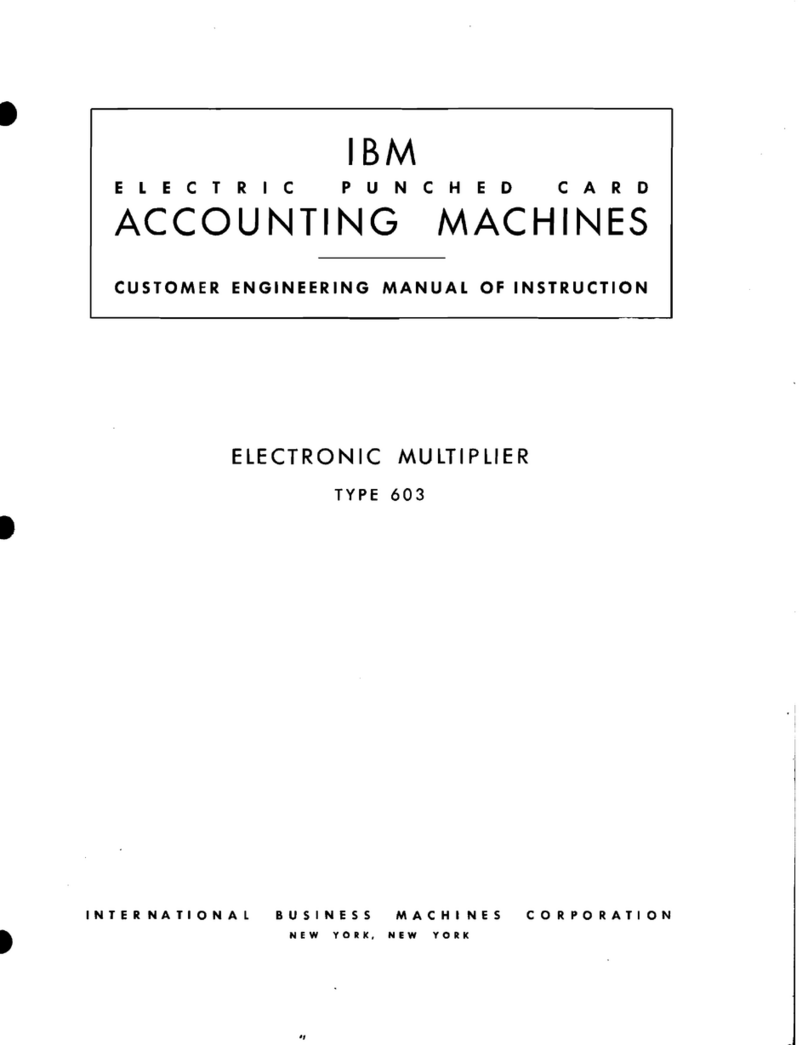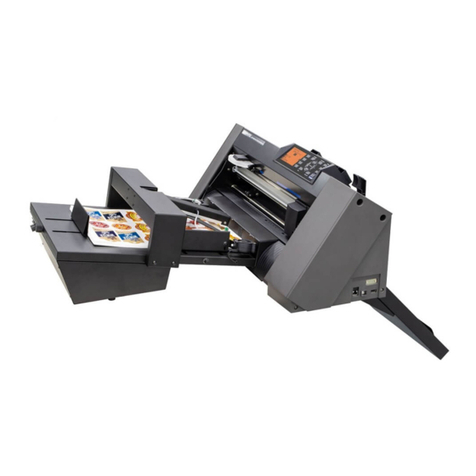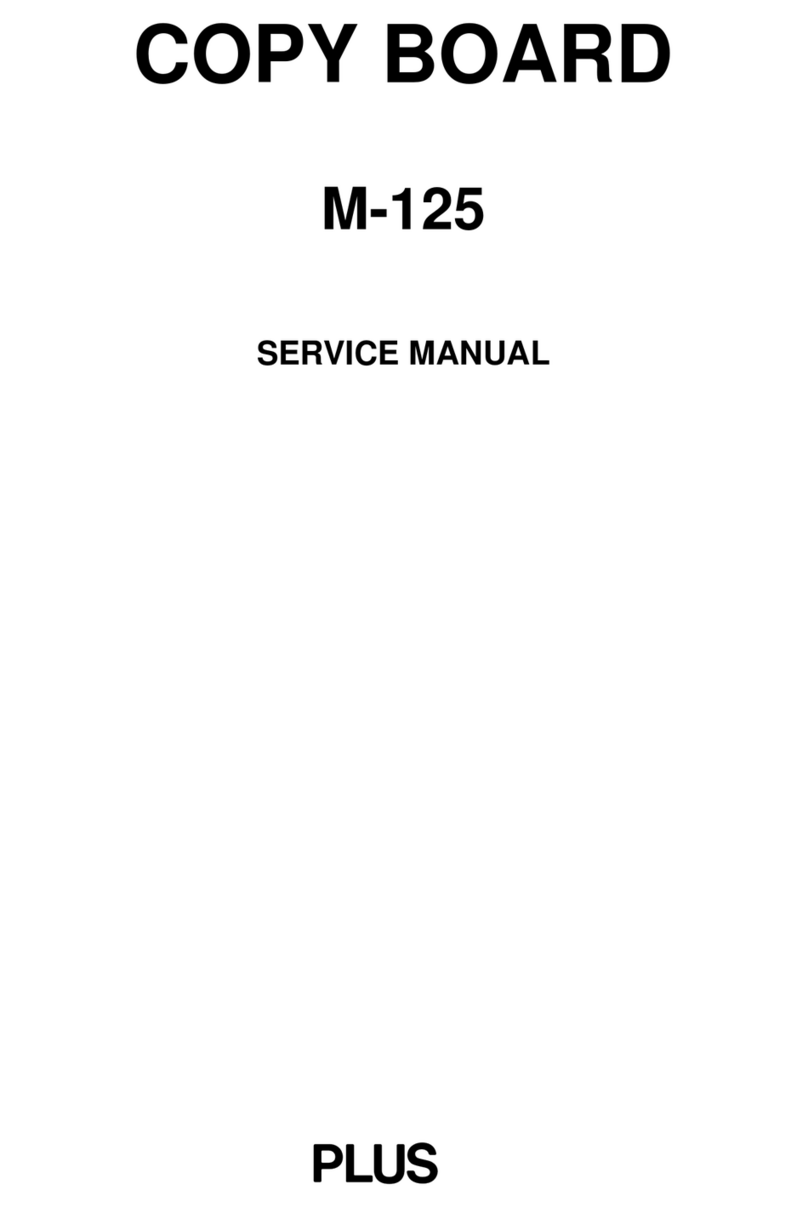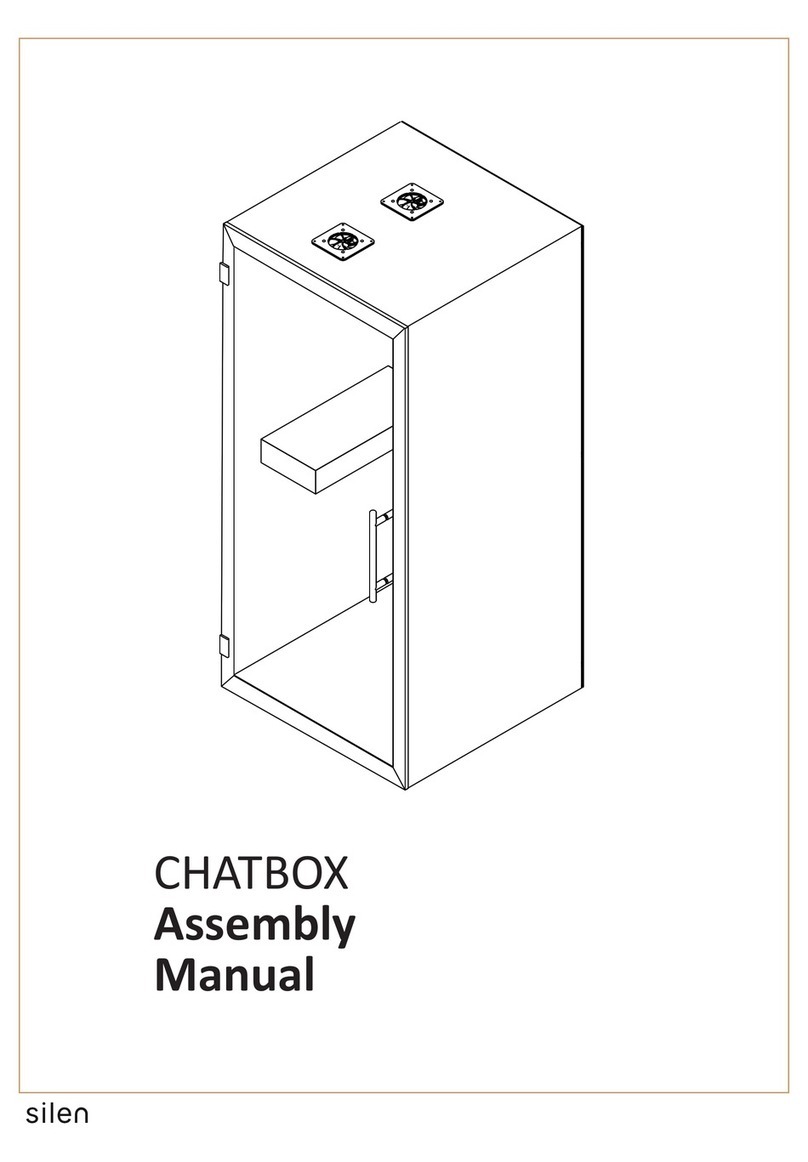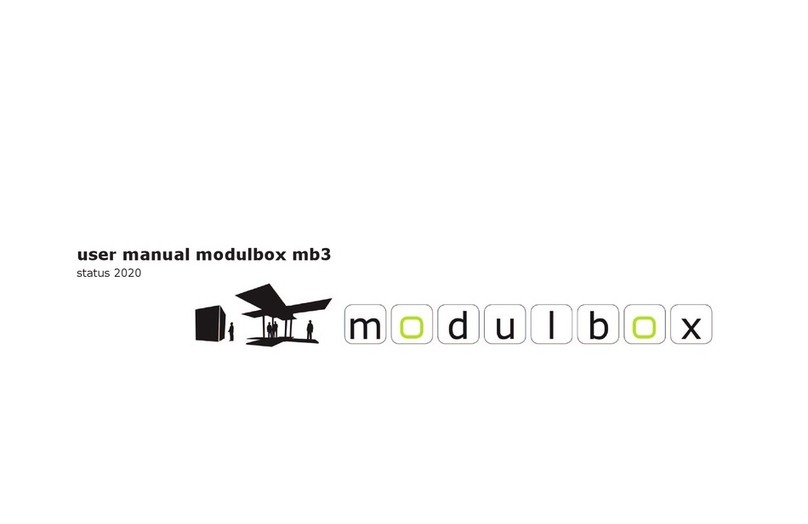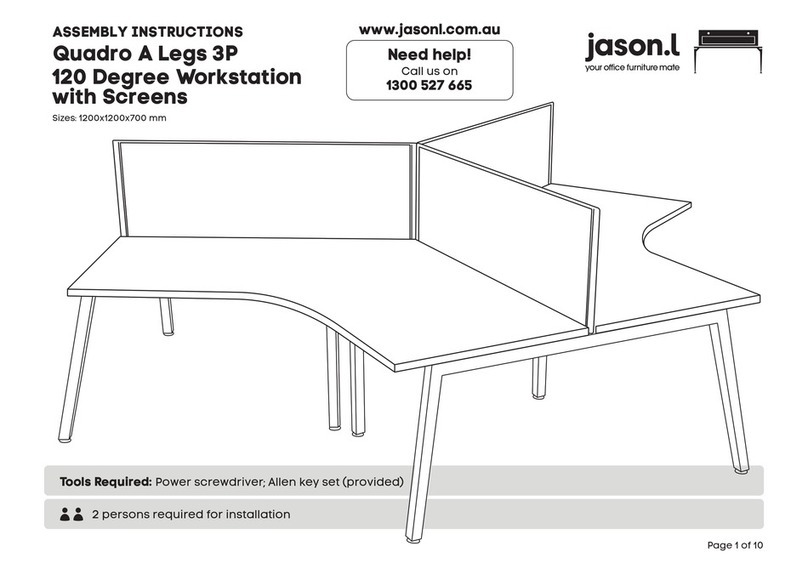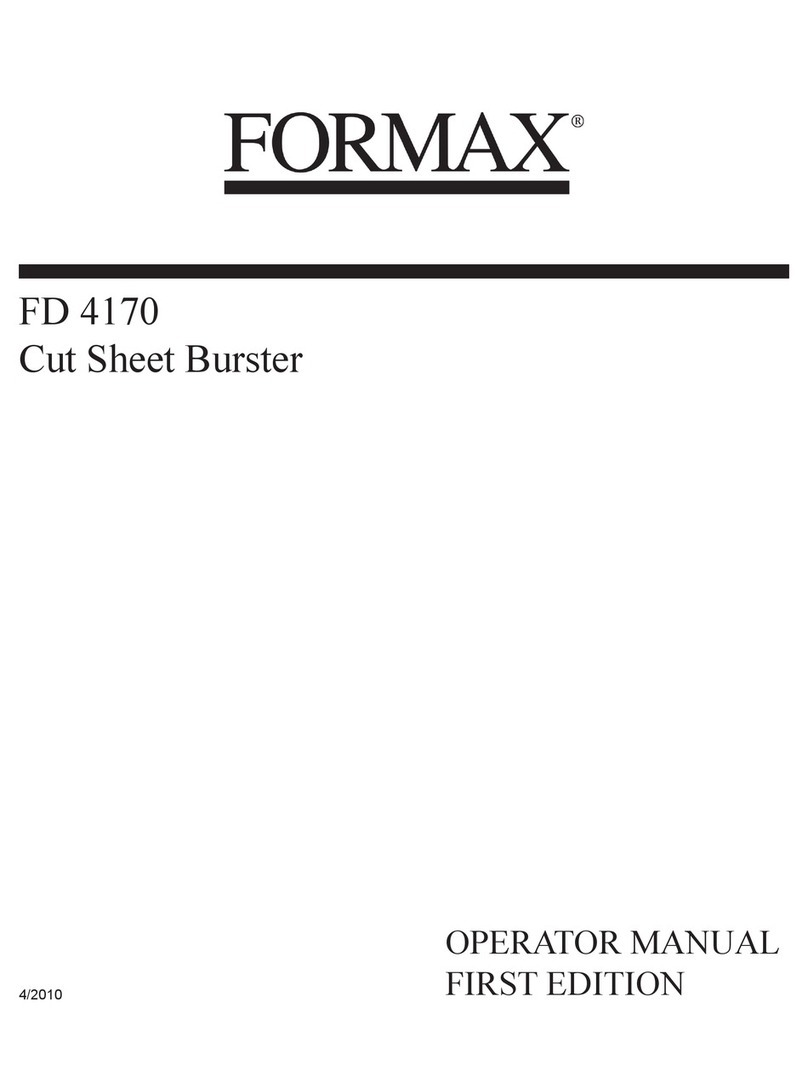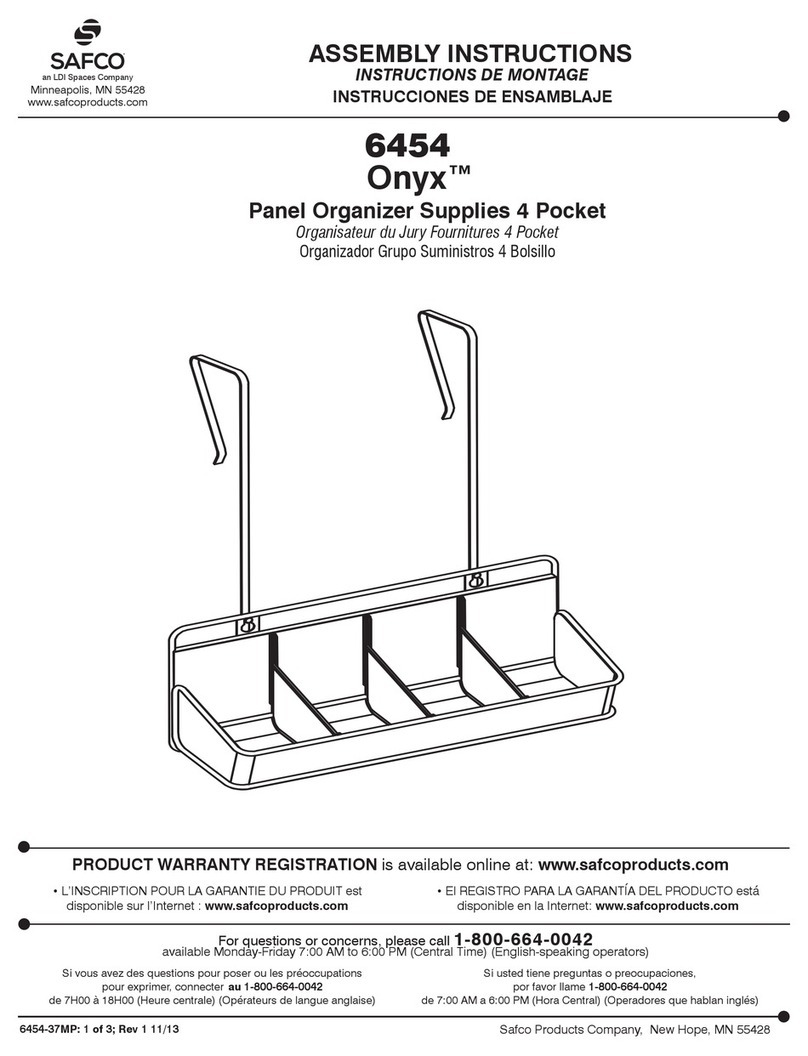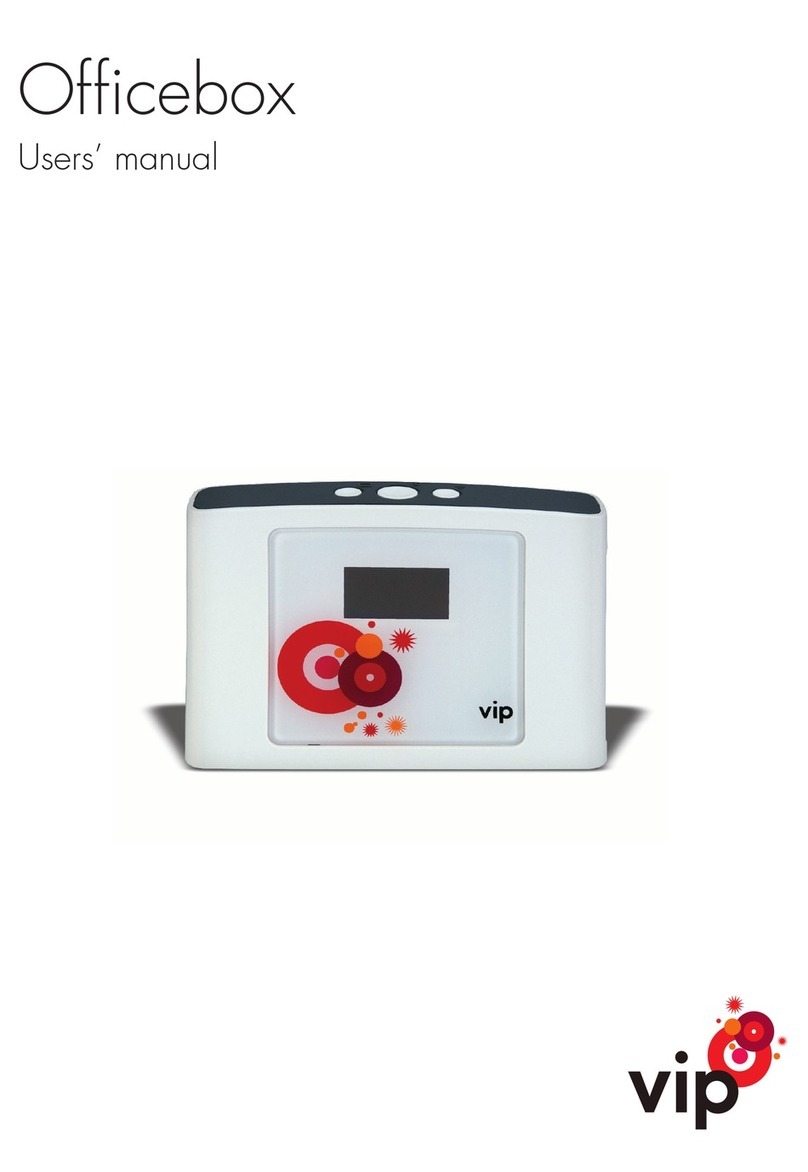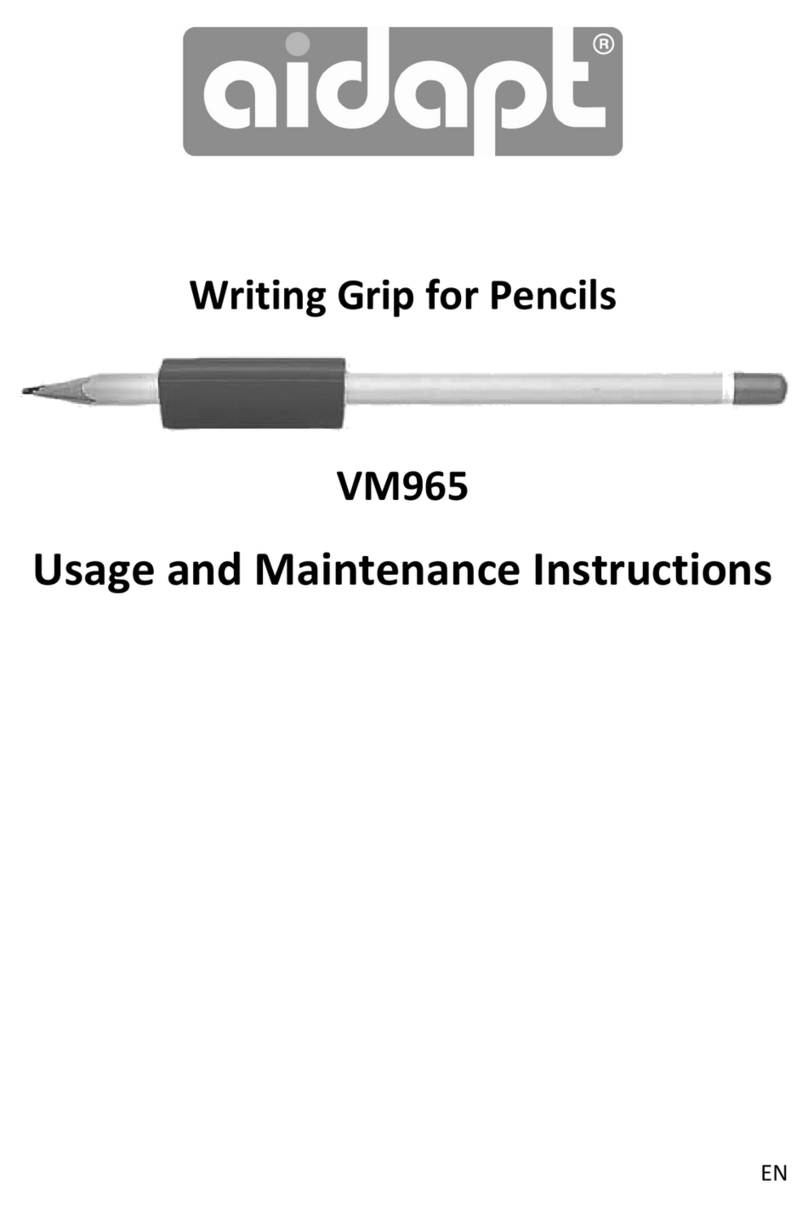IBM 80 Installation and operation manual


Customer Engineering
Manual
of
Instruction
Issued
to:
____________
_
Branch
Office:
__________
---:-_
Department:
___________
_
Address:
____________
_
Card
Sorting Machine
If this
manual
is
mislaid,
please
return
it
to
the
above
address.

MINOR REVISION (May 1957)
This edition, Form225-8766-4,
is
a minor revision of the preceding edition
but does not obsolete Form 22-8766-3. Principal changes in this edition are:
PAGE
SUBJECT
22 to end Deletion of all material that is
in
the
82-80-75
C.B.
Reference Manual
76 Added instructions for the 978 Card
Counting Unit
© 1952, 1953, 1956
by
International Business Machines Corporation

CONTENTS
IBM
82
CARD
SORTING MACHINE
FUNCTIONAL PRINCIPLES .......................................... 5
Principle of Sorting ................................................ 7
Operating Features .................................................. 8
Switches and
Fuses
......................................... 8
Card Brush ..................................................... 9
Contact Roll Cover .......................................... 9
Commutator ...................................................... 9
Declutching Hand Wheel ............... ................ 9
Card Runout .................................. ................ 9
Pocket Stop Device .......................................... 9
Machine Operation ......................... ................ 9
Current, Weight and Dimensions ... ................ 10
MECHANICAL
AND
ELECTRICAL PRINCIPLES ........
11
Chute Blades and Sort Magnet ................................
11
Card Brush Assembly ..............................................
13
Commutator ..............................................................
14
Drive Shaft and Motor ............................................ 16
Declutching Hand Wheel........................................
17
Reverse
Lock
............................................................
17
Feed Knives .............................................................. 18
Feed Rolls ................................................................ 19
Card Levers and Contacts ........................................
21
Pocket Stop Device ..................................................
21
CIRCUIT DESCRIPTION ................................................
22
Selenium Rectifiers ..........................................
22
Duo Relays ......................................................
22
Glossary of Terms and Abbreviations ..............
23
Time Delay Relay............................................
23
Relay Gate and Electronic Chassis ...........
_......
23
Tube Filaments ................................................
23
DC Machine Circuit ........................................
23
Star~ing
a!ld
~unning
Circuits ................................
25
SortIng Circuits ........................................................ 26
General Operation ............................................
27
Oscillator and Rectifier Tube ................
...
.......
27
Static Circuit Conditions ................................
28
Firing the Trigger Tube .................................. 29
Energizing the Sort Magnet .......................... 29
Restoring
Bias
..................................................
31
Miscellaneous Components ..............................
31
E,
F,
G
Suffix
Changes ....................................
31
PURPOSE OF RELAYS, CONTACTS AND SWITCHES
32
IBM
80
CARD
SORTING MACHINE
FUNCTIONAL PRINCIPLES ..........................................
Operating Features ..................................................
Mechanical and Electrical Principles ........................
CIRCUIT DESCRIPTION ................................................
Relay Cabinet .................................
__
...............
DC Machine Circuit ......................................
Starting and Running Circuits ................................
Motor Relay and Card Control Relay ..............
Drive Motor ....................................................
Sorti~U~~~~ui~a~.~~!.~~.~
..........
~~~~
......
~
........
~~
..................
~~
..
::::::::::::::
Purpose of Relays and Contacts ............................
IBM
75
CARD
SORTING MACHINE
33
33
34
35
35
35
35
35
35
37
37
37
FUNCTIONAL PRINCIPLES .......................................... 39
Operating Features .................................._............... 40
Switches ......................._.................................... 40
Counter Reset .................................................. 40
Current, Weight, and Dimensions
...
............... 40
Mechanical and Electrical Principles ...................... 40
Card Counters
..
................................................ 40
Reset Interlock Contact ....................................
41
Counting Commutators
..
......... ......................
41
Slate
Base
Relays ............................................
42
CIRCUIT DESCRIPTION ................................................ 45
~elay
~abi!lets
and Power Supply Rectifier .... 45
CountIng Circuits ....................................................
45
Card Lever Hold Relay.................................. 45
Counter Magnets and Relays
..
........................ 46
Transfer Set Up Relay.................................... 47
Count Control Relay and Reject Counter ...... 47
Total Counters ................................................ 47
Sorting Circuits ........................................................ 47
Purpose of Relays, Commutators, and Contacts .... 47
SPECIAL
DEVICES
AUXILIARY CARD
COUNTING
DEVICE ..................
50
Circuit Description ..................................................
51
SORT SUPPRESSION DEVICE ......................................
53
Circuit Description ..................................................
53
Sort Suppression Commutator ........................ 54
Energizing the Sort Magnet ............................ 54
CARD MATCHING DEVICE ..........................................
55
Circu?tPg:~~~?Pti~~··::::::::::::::::::::::::::::::::::::::::::::::::::
~~
Sorting Detail Cards ........................................
57
Sorting Master Cards ......................................
58
Purpose of Miscellaneous Circuit Components
51:!
MULTIPLE COLUMN SELECTION DEVICE ................
59
Control Panel' ..................................................
6J
Common Digit Select:on .................................. 60
Multiple Column Selection ..............................
61
Zero-Elimination ............................._................ 62
Normal Sorting ................................................ 63
Internal Controls ......................................................
6.3
Circuit Description .................................................. 64
Normal Sorting and Common Digit Selection 64
Multiple.
Col.umi?'
Select.i~n
.................................... 64
Static
CirCUit
Condltlons .................................. 64
Sensing a Selected Value ................................ 64
Sensing an Unselected Value .......................... 64
Zero Elimination .................................................... 68
Static Circuit Conditions ................................ 68
Operation of
.the
Zero-Eliminate Control Tube 68
Circuit Cutout Relay........................................ 69
GROUP SORTING DEVICE .......................................... 70
Internal Controls ....................................................
71
Circuit
I?esc~ipti?n
......:.:.........................................
71
Static
CirCUit
Condltlons ..................................
72
Firing the MCC Tube ....................................
72
Sorting the Master Card ...............................
_.
72
Sorting Detail Cards ..................................... 72
Trailer Card Operation ....................................
75
Single Master Card Operation ........................
75
Purpose of Miscellaneous Circuit Components
75
IBM 978 CARD COUNTING
UNIT
.............................. 76
Functional Principles .............................................. 76
Introduction ...................................................... 76
Reset .................................................................. 76
Counters ............................................................ 76
Tube and Relay Storage .................................. 76
Circuits ......................................................................
77
Powe~
.
Supply:
.....:........................................... 77
ConditiOning
CirCUits
...................................... 79
Sort
Only.......
................................................. 79
Count Only...................................................... 79
Sort and Count ................................................ 82
Purpose of Circuit Components .............................. 82
Wire Contact Relays ........................................ 82
Duo Relays ..................................... ................. 82
Cam Contacts ................................................... 84
Switches ............................................................ 84
Rectifier ............................................................ 84
Resistor .................. .......................................... 84

IBM
82
CARD
SORTING
MACHINE

IBM
82
CARD
SORTING
MACI-tINI:
FUNCTIONAL
PRINCIPLES
THE THREE machines necessary
to
perform the basic
operations required in punched card accounting are the
punch, the sorter, and the accounting machine. The
punch establishes the records, the sorter arranges or
classifies them, and the accounting machine produces
the printed reports.
In
punched card accounting systems, thousands of
cards may
be
involved daily in the
taJSk
of preparing
final reports.
In
most
cases,
these cards must
be
classi-
fied
properly prior to the preparation of each report on
accounting machines. Classification of such a large
number of cards manually would present an immense
task which would consume many man hours of work
and would
be
greatly subjected to human errors.
The Type 82 Card Sorting Machine affords a speedy
and accurate method of arranging cards into any desired
sequence. The operation of the Type 82 Sorter
is
Figure 1. Card Transport Through
the
Machine

6
CARD
SORTING
MACHINE,
TYPE
82
entirely automatic, except for the removal and replen-
ishing of cards in the machine.
Sorting cards on the Type 82 machine consists of
running the cards through the machine once for each
column in the field being classified. This
is
comparable
to scanning a series of printed figures with the human
eye, except here an electric sensing brush becomes the
eye.
This brush can sort on only one column at a time.
However, it
is
movable,
so
that the operator may posi-
tion the brush to sort on
anyone
of the 80 column
positions on the IBM card. The machine
is
equipped
with
13
pockets for dispersal of cards; one pocket for
each digit value 0 through
12
and one reject pocket
for cards unpunched in the column being sorted.
By
means of feed knives, cards are
fed
one at a time
from the bottom of the pack in the card magazine on
the right end of the machine (Figure
1).
After leaving
the card magazine, they are gripped between sets of
constantly revolving feed rolls and are fed from the
right to the left of the machine.
As
the cards travel
from right to left, they first
pass
the card brush station,
2
~
112
2 2
1 3
1 2
2 1)
1 3
2 2)
2 1
1 1
1 2
2,2
2 3
2 1
2 2
Cards
in
Magazin
(in miscellaneous
order)
12
22
12
23 22
21
13 12
21
13
22
11
--~
22
21
"3" Pocket "2" Pocket "1" Pocket
Cards
now
in
order
in
units position
FIRST
SORT
e
located between the first and second sets of feed rolls.
Here the punching in the card column being sorted
is
sensed
by
means of a brush projecting through the holes
in the card and making contact on a common roll.
Sensing of card punching
at
the card brush station sets
up the proper combination of raised or lowered chute
blades at the sort magnet station, located between the
second and third sets of feed rolls. This setup
is
accom-
plished
as
the leading edge of the card
is
traveling
under the chute blades. The chute blades, according
to
their setup, then direct the' card
to
its
proper pocket
(the card
is
still being carried
by
the feed rolls).
If
a 1 punch
is
sensed at the card brush station, the
chute blade combination setup will be such that the
card will be directed to the 1 pocket.
If
an 8 punch
is
sensed at the card brush station, the chute blade
combination setup will be such that the card will be
directed to the 8 pocket.
If
no punching
is
sensed
at
the card brush station, all chute blades will remain in
a raised position, and the card will be directed
to
the
reject pocket.
g)3
1 3
1 3
2 3
1 2
2 2
1 2
2 2
1 2
2 2
2 2
2 1
2 1
1 1
2 1
Cards in
order
in u
nits
position
(in
miscellaneous 0
rder
in
tens position)
23
23
22
22 13
22
13
22
12
21
12
21
12
21
11
"2" Pocket
"I"
Pocket
Cards
in
order
in
units and tens position (sub classification)
SECOND
SORT
Figure
2.
Principle
of
Sorting

FUNCTIONAL
PRINCIPLES
7
During the time that the punching in the card
is
sensed and the proper chute blade combinations are
set up, the card
is
continually moving from right
to
left under control of the constantly running feed rolls.
Speed
and
Capacity
The speed of the Type 82 machine
is
650 to 660
cards per minute.
The
capacity of the card magazine
is
550 cards.
PRINCIPLE
OF
SORTING
Numerical Sorting
Sorting multiple digit fields when only one column
may
be
sorted
at
a time is illustrated in Figure
2.
A
group of cards, punched
11
through 23 in a two digit
field, are arranged in miscellaneous order and placed
in the card magazine of the sorter.
The
units position
is
sorted first by positioning the card brush
on
that
column and running the cards through the machine.
All cards punched with a 1 in the units column will fall
into the 1 pocket, all cards punched with a 2 in the
units column will fall into the 2 pocket, etc.
When
all the cards have been run through the
machine for sorting on the units position, the card
brush
is
shifted to the tens column position and the
cards removed from the pockets. To remove cards from
the pockets in proper sequence, the
l's
are removed
first and placed
face
down in the card magazine, the
2's are removed next and placed face down on the
l's, the 3's
face
down on the 2's, etc. This
is
common
practice but cards may be removed in descending order
by
starting with the 9's and keeping the cards face up
in the palm of the hand instead of face down. The
important item during removal
is
to keep the cards
in sequence.
After all cards have been removed from the pockets
and replaced in the card magazine, and the card brush
has been located on the tens column position, the
machine
is
restarted and sorting of the tens position
takes place. Those cards punched with a 1 in the tens
position fall into the 1 pocket, the 2's into the 2 pocket,
etc.
By
removing the cards from the pockets in ascend-
ing order
as
was
done on the first sort,
(l's
ahead of
the 2's) the original group of miscellaneous cards will
be
found to be in numerical sequence froni
11
to 23.
The sorting process could be illustrated further
by
the
use
of a larger field, but from the foregoing example
it will
be
observed that, upon completion of the second
sort, all cards will appear in groups arranged in correct
numerical sequence.
The procedure for sorting cards to arrange them in
proper sequence according to major and minor classi-
fications follows the same general principle.
If
the above
mentioned two-digit numbers were subclassifications and
another one-column field were a major classification,
the next sort for major classification would bring these
groups together, and the subclassifications would be
in order within each group
as
illustrated in Figure 3.
A general rule to be kept in mind
is
that the sorts
for the minor
or
subclassifications are made first and
the
SOrts
for the major classifications are made last.
Alphabetic Sorting
Sorting cards containing alphabetic information into
alphabetic sequence necessitates the double sorting of
each column, since each letter
is
recorded by two holes
in a single column, one of which
is
12,
11
or 0 and
the other a digit from 1 to
9.
For example, the letter
A
is
indicated
by
punched holes in the 12 and 1 posi-
tions of a given column.
1523
522
1323
522 422 322
521
421
321
513 412 313
512 411 312
"5"
Pocket
"4"
Pocket
"3"
Pocket
Major! Sub
3)
! 2 3
5
12
3
1
5
12
2
4
12
2
3
12
2
1
12
2
4
'2
1 1
'2
, 1
3
12
1
: 1 3
i 1 3
: 1 2
: 1 2
,
, 1 2
4Y:
1 1
Cards
in
Maga
zine
by(cards
in
order
sub
classificatio
n
ne~us
but
in
miscella
order
by
major
classification)
Cards now
in
order
by sub
and
major classification
SORTING
BY
MAJOR
GROUPS
Figure
3.
Principie
of
Sorting

8
CARD
SORTING
MACHINE,
TYPE
82
The cards are sorted in the normal manner
accord-
ing to the digits 1 to 9 in the first column to
be
sorted.
The
zone
contact bar on the commutator (Figure
4)
is
then moved
to
the center of the commutator and
the complete sorting operation repeated on the
same
card column. Positioning the
zone
contact bar in this
manner suspends sorting for all values of punching
except 0,
11
and 12. Those
cards
which fall in the
12
pocket will contain the letters A to I
in
alphabetic
sequence; those in the
11
pocket, the letters J
to
R;
and those in the °pocket, the letters S to Z. Succeeding
columns are each sorted in the
same
manner
as
above;
the digits 1
to
9
first,
followed
by
sorting of the zone
punchings 0,
11
and 12. When cards
are
removed
from the pockets following a
zone
sort, the
12
zone
cards should be placed
face
down
in the card magazine,
the
11
zone
cards next; and the °
zone
cards
last in
preparation for digit sorting on the next column.
In
most
cases,
it
is
not necessary to sort on all columns
of a name field to place the cards in alphabetic order.
Usually sorting on the first three or four characters in
a group of names will
be
sufficient.
OPERATING
FEATURES
REFER
to Figure 4 for the location of the major oper-
ating features.
Switches
and
Fuses
There are 3 operating switches located on the front
right end of the machine. The main line switch, when
turned
on,
furnishes power to the machine and
com-
Fi4ure 4. Operatinl1 Features

FUNCTIONAL
PRINCIPLES
.,
pletes a circuit to the filaments of the tubes.
It
also
completes a circuit to the time delay relay.
The start button, when depressed, sets up circuits
which energize the drive motor, and it causes the
ma-
chine
to
operate. The start button
is
ineffective for
approximately 50 seconds after turning on the main
line switch because of the delay caused
by
the time delay
relay. This delay
is
necessary to allow the electron tube
filaments to reach proper operating temperature before
the machine
is
started.
The stop button causes immediate stopping of the
machine.
When
the
stOP
button
is
depressed, the run-
out feature of the machine
is
rendered inoperative, and
the machine stops
as
soon
as
its inertia
is
overcome
by
friction.
The fuses are located on the inner side of the right
hand lower cabinet assembly in the position shown in
Figure
1.
Card
Brush
The card brush senses the punching in the card.
It
may be set on any column to
be
sorted
by
rotating the
card brush lifting handle near the front of the card
magazine. Each rotation of the handle moves the brush
one column. The brush may
be
moved across several
columns
by
rotating the handle to the upper position
and sliding the brush holder to the desired column while
pressing down the finger lever at the top of the brush
assembly. A column indicator guide and pointer
is
located above the brush in a position readily visible
to the operator for convenient setting of the brush on
the column to be sorted.
Contact
Roll
Cover
The plastic cover.over the contact roll must
be
down
before the start key can become operative. This
is
a
safety cover which operates two microswitches. Open-
ing of these microswitches when the contact roll cover.
is
raised interrupts the running and sorting circuits.
Commutator
On
the front end of the first lower
feed
roll
is
a
commutator on which
12
contact bars (one for each
vertical position in the card) and an alphabetic zone
bar are mounted. The contact bars on the commutator
are accessible through the large hole
in
the switch plate.
When
all of the commutator contact bars are toward
the outside of the commutator, all holes punched in
the card column being sorted are sensed and cause the
card to sort to its proper pocket. However,
if
the 4 and
ocontact bars, for example, were moved to the center
of the commutator, sorting of 4's and
O's
would be
suspended. Any 4 or 0 punching in the card column
being sorted would not be sensed and the card would
feed
to the reject pocket just
as
though it were un-
punched. Sorting of all other digits would be normal.
1£
the zone contact bar (red bar)
is
moved to the
center of the commutator, sorting will be suspended
for all punching except 0,
11
and 12.
That
is,
those
cards that have no 0,
11
or
12
punching in the column
being sorted, will be fed to the reject pocket
as
though
they were unpunched.
Declutching Hand Wheel
A declutching hand wheel
is
provided for turning
the machine over
by
hand to check adjustments and
timings. This hand wheel
is
located on the right end
of the machine and, when rotated in a clockwise direc-
tion, causes the main drive shaft and its gears to revolve.
The handwheel must be pressed
to
the left while
it
is
being revolved before the main worm shaft will
rotate.
When
the machine
is
operating under power,
the handwheel
is
automatically declutched to keep
it from revolving and presenting a hazard.
Card Runout
When
the card magazine becomes empty while the
machine
is
in operation, a runout feature incorporated
in the machine keeps the drive motor running for a
long enough period of time to allow all cards to feed
to
their proper pockets.
On
older sorting machines
this
runout feature was not present, making it necessary in
many cases to depress the start
key
long enough to feed
the last
few
cards into their proper pockets.
Pocket Stop Device
Each pocket of the sorter
is
equipped with an auto-
matic pocket stop. This
is
a safety device which auto-
matically shuts
off
the current and stops the machine
when
anyone
of the thirteen pockets becomes filled to
capacity with cards. Each pocket has a capacity of
approximately 550 cards. Once the machine has been
stopped
by
the activation
of
the pocket stop device, it
can not be restarted
by
means of the start key until
the full pocket or pockets have been emptied.
Machine Operation
The main line switch should be turned on first to
allow time for the tubes to heat up while other prepara-
tions for starting are
being
completed.

10
CARD
SORTING
MACHINE,
TYPE
82
Prior
to
placing cards in the card magazine, they
should be carefully joggled against the glass top frame.
Cards are then inserted in the magazIne,
face
down with
the 9 edge to the left.
Do
not drop or force the cards
into the magazine. Check to
see
that the edges of the
cards are even to assure free movement within the
magazine. Place the card weight on top of the pack
to insure proper feeding
of
the last
few
cards.
After the cards have been placed in the card maga-
zine, the card brush should
be
positioned on the proper
, card column. The contact bars on the commutator
should
be
checked to
see
that they are in the contacting
or
OUT
position if desired,
so
that all holes punched in
the card column will be sensed
by
the card brush. The
contact roll cover must be down before the start
key
can become operative.
Assuming that all of the above conditions have been
satisfied, the start
key
may
be
depressed to cause the
machine
to
operate. This key must be held depressed
until the cards have reached the third set of upper feed
rolls, thus dosing all card lever contacts. Once cards
have reached this position in the machine, it will con-
tinue
to
operate automatically until the card magazine
has been emptied of cards, one or more pockets become
full, or the stop
key
is
depressed. The contact roll cover
----
Voltage Group Maximum
Operating Current
Amperes
Volts
Cycles
Phases
1/2
HP
1/3
HP
115
DC
5.0 5.0
230 DC 3.0 3.0
115 25 1 6.5 6.0
115 50 1 7.0 6.5
115 60 1 6.5 6.1
230 25 1 3.7 3.5
230 50 1 4.0 3.9
230 60 1 3.7 3.5
208 60 1 4.0 3.8
230 25 3
2.1
2.0
230 50 3 2.3 2.2
230 60 3 2.1 2.0
must not
be
raised while the machine
is
in operation
since this may
cause
mis-sorting
as
the machine comes
to a stop.
Care should be exercised when adding cards to the
card magazine while the machine
is
operating. Do not
jar the pack of cards already present in the machine
and do not add any cards jf the pack of cards present
in the machine
is
small; either procedure may cause
the machine
to
jam.
Current,
Weight,
and
Dimensions
See
the table below for the operating current, starting
current and
fuse
rating of the Type
82
machine.
NOTE:
Some Type 82 machines were produced using
Y2
HP
motors equipped with fusetrons instead of
fuses.
In
the
case
of these machines,
-the
fusetron racing listed
under the 1/3
HP
heading may be used
as
these values
give enough safety factor due to their time lag char-
aoreristJic.
Weight unpacked -
Weight packed
Length
Width
Height - - - - - - -
530 pounds
785
pounds
61
inches
16
inches
46 inches
Maximum
Starting Current Main
Fuses
Amperes Ampere Rating
1/2
HP
1/3
HP
1/2
HP
1/3
HP
Fuse
Fusetron
42.9 36.9
12
5.0
21.9 18.9 6 3.2
38.9 26.7
12
8.0
37.9 25.6
12
8.0
39.9 26.9
12
8.0
18.6 13.5 6 4.0
19.1 13.0 6 4.0
20.1 15.0 6 4.0
18.2 16.6 6 4.0
12.7 8.4 6 2.5
14.6
9.9
6 2.5
13.2
9.1
6 2.5

MECHANICAL
AND
ELECTRICAL
PRINCIPLES
THE
REAR cover assembly and the covers on the right
and left ends of the machine are each held in place
by
means of concealed latches. These latches may
be
released
by
pressing on the latch cover plate.
The cover over the switch plate
is
hinged at the
bottom and held in place
by
a holding screw at the
upper right hand corner. The right end cover must
be removed before this holding screw
is
accessible.
Four adjustable levelers are furnished with each
machine for the purpose of leveling the machine and
to eliminate excessive vibration caused
by
an uneven
floor surface.
Chute Blades
and
Sort
Magnet
In
Figure 5, a card
is
shown passing between the
card brush and the contact roll just after it has been
fed
from the bottom of the pack in the card maga-
zine. The leading edge of the card
is
passing under
the tips of the chute blades and the card brush
is
wiping across the face of the card in search of punched
holes in the column being sorted.
The
chute blades are formed strips of tempered
spring steel, varying in length, from the opening of
each pocket to a position resting on the top of the
Fi~ure
5.
Sensin~
the
Card
11
sort magnet armature. There are two styles of chute
blades in
use.
The old style blade
is
.008" thick and
the new style blade
is
.009" thick. The .009" blade
has better wearing qualities than the .008" blade.
Each blade
is
numbered according to the pocket to
which it guides the card.
In
guiding a card to the
proper pocket, the card rides immediately over the
chute blade for that pocket.
Assume that a 4
is
punched in the column on which
the card brush
is
set. The chute blades are
so
arranged
that when the card has advanced to the position where
the card brush makes contact with the contact roll
through the 4 hole, the leading edge of the card will
have passed under the 9, 8, 7, 6, and 5 chute blade
tips
as
shown in Figure
6.
In
passing under the chute
blades, the card separates them from the sort magnet
armature.
As
soon
as
contact
to
the contact roll
is
made
by
the card brush, circuits are completed which energize
the sort magnet. Energization of the sort magnet at-
tracts the sort magnet armature. This armature
is
normally held in a raised position away from the
magnet cores (Figure
6)
by
means
of
a return spring.
As the armature
is
attracted, the 4,
3,2,
1,
0,
11, and
12 chute blades follow it down because of the spring
tension
on
the blades; but the 9, 8, 7, 6, and 5 chute
blades are held up by the card, thereby creating an
opening between the 5 and 4 blades (Figure
7).
The
feed rolls convey the card through this opening (over
the 4 blade and under the
5)
towards the 4 pocket.
As
the card nears the 4 pocket, travelling between the
4 and 5 chute blades, it strikes a formed ear on the
under surface of the 5 blade which guides the card
into the 4 pocket.
As
the card travels into the pocket,
a deflector spring (Figure
8)
is
pushed upward by
the card; then
as
the card leaves the feed rolls, the
tension of this spring deflects the card downward. This
action causes proper stacking of the card
as
it
is
free
of any drive which might cause it to stand on edge.
An armature knockoff screw insures the return of
the sort magnet armature to its normal position before
the next card
is
read (Figure
7).
The
knockoff screw
is
rotated counterclockwise (as shown by the arrow)

12
Pock.t
12
Pock.t
Card
Brush
insulated
Sort
Magnet Armatur.
·up·
just
before Magne
..
are
energized
Reject
Pocket
','
"
"
Fi~ure
6, Position
of
Chute
Blades Prior to
Sort
Magnet
Energization
Sort Magnet Armature energized
Reject Pock.t
Figure
'1,
Position
of
Chute
Blades
After
Sort
Magnet
Enerl1ization
12
" Hole
in
Card

MECHANICAL
AND
ELECTRICAL
PRINCIPLES
13
Figure 8.
Cards
Entering the Pockets
and
is
mounted on the third lower feed roll shaft,
which
is
driven from the main worm shaft and makes
one revolution per card cycle.
It
is
timed
to
knock
off
the armature between the
12
position of one card
and the 9 position of the following card. Although
the return of the sort magnet armature
is
spring actu-
ated, the knockoff screw
is
provided to overcome any
residual magnetism present in the sort magnet.
If
the card fed
is
unpunched in the column being
sorted, the card brush fails
to
make contact with the
contact roll; therefore, the sort magnet
is
not ener-
gized and
its
armature
is
not attracted. Consequently,
the card
is
fed
under all the chute blades and deflected
into the R (reject) pocket.
Card
Brush
Assembly (Figure
9)
It
will
be
noted
by
referring to Figures 6 and 7
that the card brush makes contact on the contact roll
through the hole in the card. This sets up circuits
which cause energization of the sort magnet.
Figure 9.
Removing
the Card Brush' Assembly

14
CARD
SORTING
MACHINE,
TYPE
82
The card brush·may be positioned at
any
column
desired through manual operation of the card brush
lifting handle and the finger lever on the index head
rack holder (Figure
4).
During a sorting operation,
it
is
necessary that the card brush lifting handle be
in a position with
its
handle downward,
as
this allows
the card brush to rest on the contact roll for the pur-
pose of reading the card.
When
the card brush lifting handle
is
rotated one-
half turn from its normal downward position, the
card brush assembly
is
raised clear of the contact roll
by
means of a cam pinned on each end of the worm
screw (Figure
9).
These
cams
operate against rollers
to raise the worm
screw.
The worm
screw
is
normally
held down
by
means of a compression spring on each
end.
Rotation of the card brush lifting handle one-half
turn not only raises the brush to clear the contact
roll, but also disengages the index head stop locator
from the index bar rack. This
is
necessary if the brush
assembly
is
to be moved. For one column movement,
one complete revolution of the lifting handle
raises
the
brush, disengages the index head stop locator, moves the
brush one column through the lead of the worm, and
lowers the brush to the contact roll
as
the index head
stop locator seats in the adjacent index bar rack tooth.
Rotation of the card brush lifting handle in a clock-
wise
direction moves the brush toward the rear of
the machine. Rotation of the handle counterclockwise
moves the brush toward the front of the machine.
To move the card brush assembly a distance of
several columns or more, the lifting handle
is
rotated
one-half turn to
its
raised position.
As
stated above,
this raises the brush from the contact roll and disen-
gages the index head stop locator from the rack.
By
depressing the finger lever on the index head rack
holder, the index head locating nut
is
then disengaged
from the worm
screw.
This
is
a half nut and
is
nor-
mally held engaged with the worm screw
by
means of
a spring. Disengaging the index head locating nut
from the worm screw allows free movement, in either
direction, of the complete index head and brush holder
assemblies
as
a unit. Releasing the finger lever after
the desired movement has been completed again
en-
gages the locating nut with the worm
screw,
and
returning the lifting handle to
its
downward position
readies the brush for sensing the card.
Brush
Block
l!Iongated
Holes
Here
Brush
_----1-
Brush
Holder
F;~ure
10. Card
Brush
Holder
Assembly
A spring operated contact plunger (Figure 10)
provides the means of electrical connection between
the brush holder and an insulated contact rail. The
contact rail extends from front to rear over the entire
range of the card brush (Figure
9)
furnishing a con-
nection
to
the card brush regardless of the column
being sorted. A square end brush (part number 202)
is
used
and
is
held secure in the brush holder
by
means
of a locking screw (Figure
10).
Figure 9 indicates the procedure for removing the
card brush assembly. First, the lifting handle
is
turned
one-half revolution to
its
upper position. The locking
lever on the brush
is
then raised until it points
directly towards the left end of the machine. This un-
locks the brush assembly, allowing it
to
be removed
by
pulling it out to the left.
Commutator
The commutator assembly
is
mounted on the front
end of the first lower feed roll shaft. The function of
this assembly
is
to act
as
an electrical cam contact in
the card brush circuit and, in conjunction with the
card brush, to establish the timing of the impulses
which energize the sort magnet.
The commutator makes one complete revolution
for each card cycle; a card cycle being the distance
from the leading edge of one card to the leading edge
of the following card.
As
cards are
fed
from the maga-
zine they are separated
by
a distance of
%"
(Figure
11
).
The width of a tabulating card
is
3
~";
there-
fore, the distance from the leading edge of one card
to the leading edge of the following card
is
4".
The
distance between punching positions on a card
is
~",
center to center of the holes.
As
this distance of
~"
is
considered one point in the card cycle, the entire
card cycle then becomes a 16 point cycle (4-7-
~
=16).

MECHANICAL
AND
ELECTRICAL
PRINCIPLES
15
Fillure 11. Card Spacing
However, the sort magnet can
be
energized only on
12 points of this cycle. These 12 cycle points corres-
pond
to
the 12 punching positions on the card. The
remaining four cycle points represent the distance
from the
12
hole of one card
to
the 9 hole of the
following card.
Figure
12
shows a commutator disassembled. Note
the
13
contact spots near the center. Twelve of these
spots, each adjacent to the other, are internally con-
nected
to
the twelve segments on the inner (lower)
ring. Nine of these spots, representing the digits 1
through 9, may be connected
to
the digit common on
the extreme outer (upper) surface of the commutator
by
means of the individual contact bars, the operation
of which
is
shown
in
Figure 12. 'The other three spots,
representing the
0,
11
and
12
values, may be con-
nected directly to the main common (outer) ring
by
means of their individual contact bars.
The thirteenth contact spot
is
internally connected
to
the digit common and,
by
means of its contact bar
(zone contact
bar),
maybe
externally connected to
Figure 12.
Commutator
Assembly

16
CARD
SORTING
MACHINE,
TYPE
82
the main (outer) common ring. Note that
if
the zone
contact bar
is
in its retracted position, the digit com-
mon
is
not connected
to
the main common.
By
re-
tracting the zone contact bar, sorting of all digit values
1 through 9
is
suspended and only 0, 11, and 12 values
are sorted.
There are three division points
on
the periphery
of
the commutator; the inner, center, and outer rings.
Three contact brushes ride on this periphery, one to
contact each ring (Figure
11).
The inner ring con-
sists of
12
insulated segments corresponding to each
value in the card and internally connected to the 12
contact spots
as
mentioned above. The commutator
is
timed to the machine in such a manner that, when
the card brush makes through the 4 hole in the card
for example, the inner commutator brush will be mak-
ing contact
on
the 4 segment. The center and outer
rings are commoned together. The outer (common)
ring extends around the complete circumference
of
the commutator. The center ring extends around
approximately three fourths of the commutator cir-
cumference; the other one fourth
is
insulation.
When
a hole
is
sensed in the card, a circuit
to
fire
the
OA4G
trigger tube
is
first completed through the
commutator from one of the 12 segments on the inner
ring to the outer
or
common ring through the com-
mutator contact brushes and the contact bar for that
position.
As
soon as the trigger tube has been fired, a
holding circuit
to
maintain conduction in the tube
is
completed from the center brush
to
the outer brush.
Firing the trigger tube removes the negative bias
on
the sort magnet control tubes and allows them to
energize the
SOrt
magnet. Furnishing a hold circuit to
maintain conduction
in
the trigger tube keeps the sort
magnet energized until the center brush breaks con-
tact
on
the center ring. This occurs after the 12
position on the card has passed under the card
brush, thus completing the sensing of any holes
in
that card column.
If
two holes are present in a column being sensed,
and no provisions are made by means of the contact
bars
on
the commutator to suspend sorting
of
one
value, the card will sort according to the first value
sensed by the brush.
When
the reading brush
is
resting on the bare con-
tact roll between cards, no circuit
is
available to fire
the trigger tube because both the inner and center
commutator brushes are
on
insulated portions
of
the
commutator.
Drive Shaft and
Motor
Mounted
on
the rear of the machine
is
a horizontal
drive shaft which transmits power from the motor to
drive the card feed mechanism, the feed rolls, and the
contaot roll.
The
drive motor is
10C3Jted
under the
base
on
the left end
of
the machine and
is
connected
Figure
13.
Main
Drive
Shaft
and
Pocket
Stop
Shaft

MECHANICAL
AND
ELECTRICAL
PRINCIPLES
17
to the drive shaft
by
means of a V belt and pulleys.
Variations in machine speed are obtained
by
adjusting
the variable speed pulley on the drive motor. The
motor mounting
is
adjustable vertically and can be
pivoted in an arc for the purpose of regulating belt
tension and alignment. The complete motor and
mounting assembly
is
easily removed for repair or
renewal.
The drive shaft extends over the length of the
machine approximately on a level with the card line
(Figure
13).
Worms cut at intervals on the shaft
are used for the purpose of gearing to the
feed
roll
shafts, which run at right angles to the drive shaft.
Except for the first 3
sets
of feed rolls, only the lower
feed rolls are gear driven; the upper rolls are friction
driven from the lower rolls. Located at the right end
of the drive shaft (rear view)
is
a thrust bearing which
aids in absorbing the thrust developed in the shaft.
This bearing must be kept well lubricated.
Declutching Hand Wheel (Figure 14)
Mounted on the left end (rear view) of the drive
shaft
is
a hand wheel which
is
used
to turn the drive
shaft over manually when checking machine adjust-
ments and timing. The hand wheel
is
normally
dis-
engaged from the drive shaft
as
it
is
cammed
to
the
left (rear view)
by
the pin in the shaft striking the
ratchet teeth on the handwheel
as
the shaft revolves.
In
this manner, the handwheel
does
not turn when
the machine
is
in operation, thus eliminating a possible
safety hazard. To revolve the shaft
by
hand, it
is
necessary to push the handwheel farther onto the
shaft while turning it clockwise, causing the ratchet
teeth to engage the pin.
A housing over the end of the horizontal shaft
is
held in place
by
four
screws.
The handwheel
is
re-
tained in this housing
by
a ring type expansion spring
around its shank. This spring expands into a shallow
channel inside the housing when the shank of the
hand wheel
is
inserted in it. A beveled edge on the
housing
aids
in compressing the spring to facilitate
inserting the shank of the handwheel.
If
it
is
desired
to remove the hand wheel, a sharp rap to the left
(rear view) with a mallet or hammer handle will
cause compression of the retaining spring and allow
it to slip through the smaller opening at the end of
the housing. Figure 14 shows the housing removed
and the handwheel inserted over the end
of
the shaft.
Figure 14.
Declutching
Hand
Wheel
Reverse Lock (Figure 15)
Machines may be equipped with a reverse lock on
the pulley end of the drive shaft which prevents the
possibility of turning the drive shaft backwards and
caus-
ing damage to the commutator and card brushes. This
Figure 15.
Reverse
Lock

18
CARD
SORTING
MACHINE,
TYPE
82
reverse lock
is
in the form of a ratchet knurl cut on the
rim of the drive pulley. A locking pawl operates against
the pulley when the force of motion
is
in a clockwise
direction (viewed from the pulley
end),
thus preventing
any actual rotation of the pulley.
When
the direction of
rotation
is
counterclockwise (viewed from the pulley
end),
the locking pawl
is
held away from the knurled
edge through the action of the pawl operating arm.
The pawl operating arm
is
actuated
by
a friction contact
with the drive pulley. The knurled teeth on the rim
of the pulley are fine enough to prevent any appre-
ciable motion when the reverse lock operates. Any older
Type 80 machines which are not equipped with the
declutching type of handwheel should have a reverse
lock mechanism.
Feed
Knives
(Figures 16, 17, 17A)
The
feed
knives, in conjunction with the roller
throat assembly, are designed to feed one card at a
time from the card magazine. The roller throat
assem-
bly consists of a vertical knife whose lower edge
is
set parallel
to
a cylindrical steel roller. The throat
assembly
is
adjusted to allow the passage of only one
card at a time through an opening between the knife
. edge and the roller. The roller assembly
is
equipped
with small oil wicks for continuous lubrication.
Power to operate the
feed
knives
is
obtained from
the main drive shaft through the card
feed
worm gear
Figure
16.
Card
Magazine
Figure
17A.
Feed
Knife
Drive
located near the handwheel (Figure
13).
This large
gear drives a crank shaft which,
by
means of a con-
necting link, transforms the rotary motion of the
crankshaft to reciprocating motion of two feed levers.
One feed knife slide assembly
is
engaged with each
feed
lever and,
as
the
feed
levers reciprocate, the
feed
knife slide assemblies travel back and forth in porous
bronze guides. Their speed of travel
is
1300 strokes
per minute, thus enabling them to feed 650 cards
per minute, one with each stroke to the left.
The component parts of a feed knife slide
assem-
bly are shown in Figure 18. The knife holder
is
adjustable laterally in relation to the feed knife slide
and the
feed
knife
is
adjustable vertically' for the
proper projection. (Carbolloy
feed
knives are not
ad-
justable.) The knife slide pin furnishes the means of
engagement with the feed levers. The knife slide pins
are available in two
sizes;
a standard
size
and an over-
SIze
to
compensate for wear.
Since there
is
no latching point in the drive of a
sorter, the
feed
knives may come to rest at any stage
of their
feed
or return stroke when the machine
is
stopped. Upon starting of the machine, however,
that
feed
knife stroke which
was
interrupted will
be
completed and,
as
the
feed
knives make their first
full length stroke to the left, one card will be picked
up
from the bottom of the pack in the card maga-
zine. This card
is
fed
through the roller throat and
between the first set of
feed
rolls
by
the movement
of the feed knives to the left (Figure
17).
As
soon
as
the card
is
·firmly
gripped between the first set
of
feed
rolls, the
feed
knives start their return stroke

MECHANICAL
AND
ELECTRICAL
PRINCIPLES
19
Upper Front Card Guid" Throat
Knife
Rear Card Guide Post
__
J«---t-l1
Connecting
Link
Continuou.ly running Feed
RollI
Fi~ure
17.
Feed
Knife
Operation
to
pick another card from the bottom of the pack.
While the knives are returning, the
first
card con-
tinues its travel to the left under control of the
continuously running
feed
rolls. The stroke of the
knives
is
so
timed that,
as
the trailing edge of the
first
card leaves the magazine, the second card
is
Feed
Knife
SlideAssembly
Knife
Slide
Adjulting
Stud
~
~~~
cO
~j~
Card
Feed
Knife
Feed
Knife
Holder
Fi~ure
18.
Feed
Knife
Slide
Assembly
picked
up
by
the knives and
is
fed through the
throat, following the first card
by
a distance of
%0".
This
process
is
repeated for the feeding of all cards.
Feed
Rolls
(Figure 19)
The
feed
rolls furnish the means of recelvmg the
cards from the feed knives and transporting them
past the card brush and sort magnet stations and on
to their proper pockets. There are fifteen sets of feed
rolls in the machine. The
first
three sets nearest to
the card magazine differ somewhat from the other
twelve.
All the upper
feed
rolls consist of two rubber rolls
pressed on a steel shaft. The first 3 upper rolls are
driven
by
19-tooth worm gears meshed with the drive
shaft. The remaining
12
upper rolls are not direct
driven, but are driven
by
friction from their matching
lower rolls. Except for the second position, each lower
feed
roll consists of two steel rolls pressed on a steel
shafr. At the second position, the lower feed rolls con-
sist of two small auxiliary rolls mounted
on
separate
shafrs and bolted to the side frame. These auxiliary rolls
This manual suits for next models
2
Table of contents
Other IBM Office Equipment manuals
Popular Office Equipment manuals by other brands

Fellowes
Fellowes QuasarE 500 manual
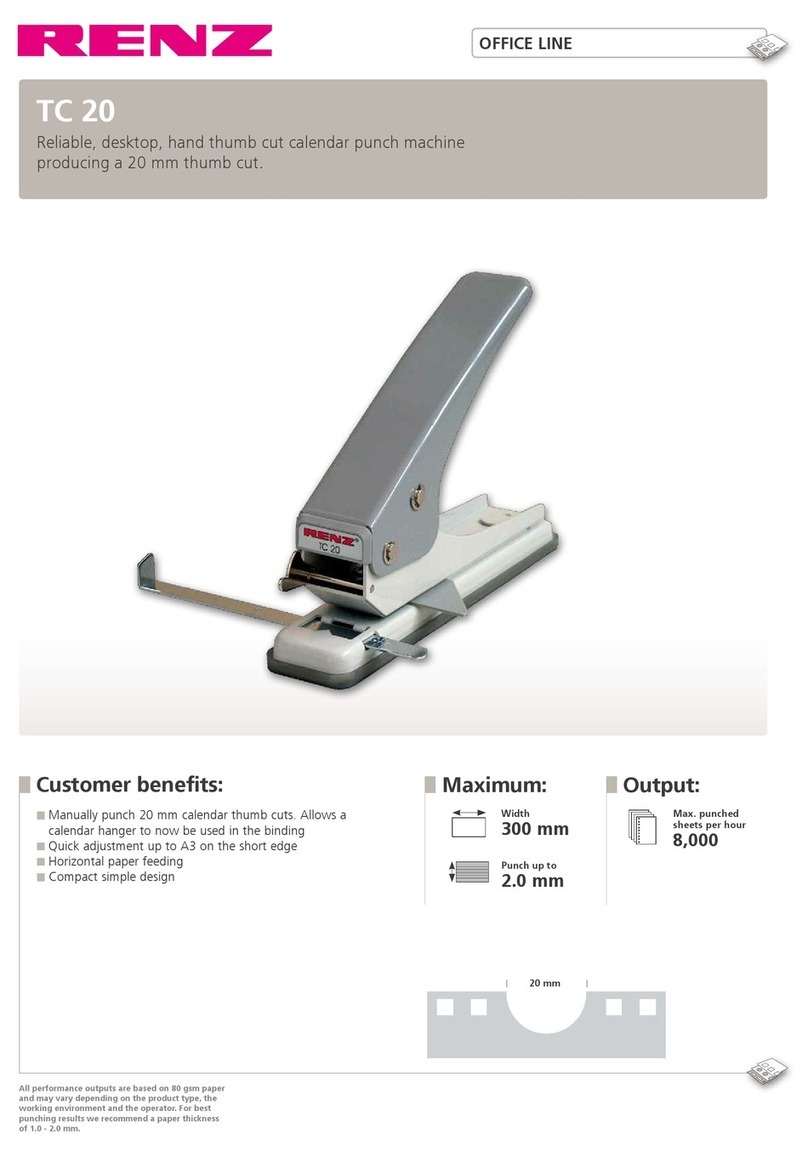
Renz
Renz TC 20 quick start guide
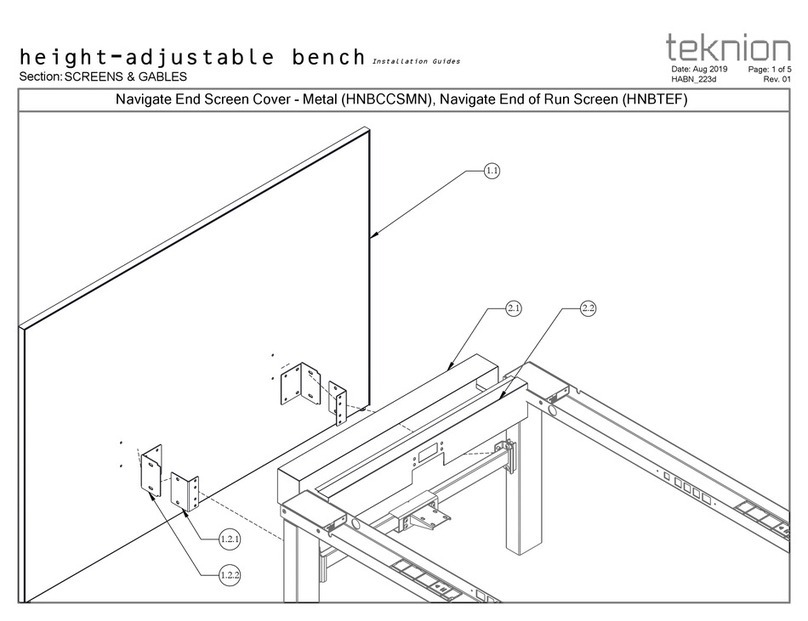
Teknion
Teknion HNBCCSMN quick start guide
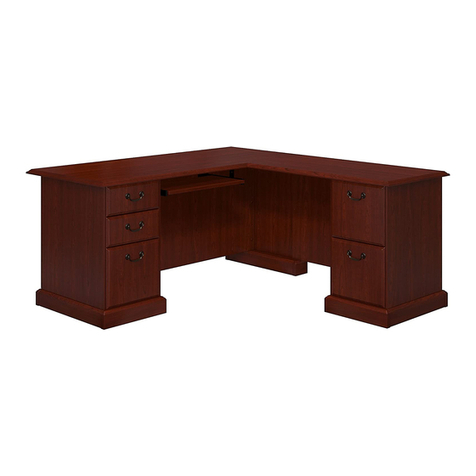
Bush Business Furniture
Bush Business Furniture WC65570 Assembly instructions
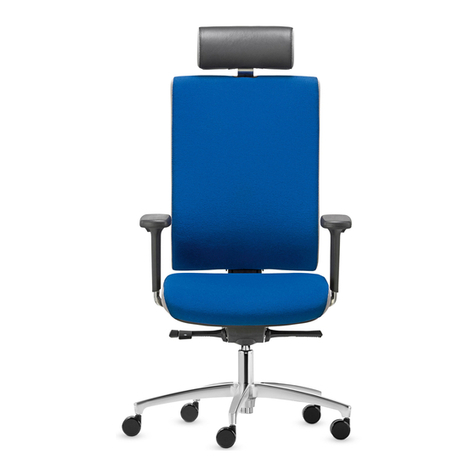
Dauphin
Dauphin Syncro-Automatic @Just magic2 Series owner's manual
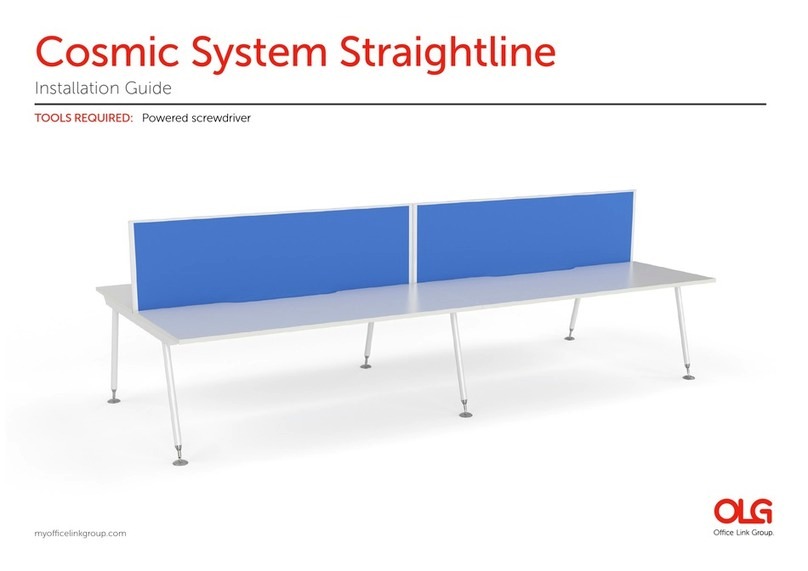
OLG
OLG COSMIC SYSTEM STRAIGHTLINE installation guide
